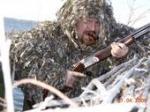Hey there!
It looks like you're enjoying our bodybuildng forum but haven't created an account yet. Why not take a minute to register for your own free account now? As a member you get free access to all of our bodybuilding forums and posts plus the ability to post your own messages, communicate directly with other members and much more. Register now!
Already a member? Login at the top of this page to stop seeing this message.
|
Riddle me this...
 |
|

12-13-2008, 05:57 PM
|
 |
Rank: Member
|
|
Join Date: Sep 2008
Location: Northern Virginia
Posts: 199
|
|
 Riddle me this...
Riddle me this...
If a train is going South, at 100 miles per hour...
and...
A fly is flying North,towards the train, at 5 miles per hour
and...
The fly splatters on the windshield of the train
At what point is the train reduced to zero miles per hour?
Never, you say? Well consider this.
In order for the Northbound fly to switch from northbound motion to southbound motion, it would have to come to a complete stop before it can begin motion in the opposite direction. Correct?
Well...
If the fly is then going zero miles per hour, and it is in contact with the trains windshield... then by definition, wouldn't the train also be going zero miles per hour, if even for a tiny fraction of a second? 
I'm a nerd... I know...
__________________
Every day God gives me, is an opportunity to take another step closer to my spriritual, personal and professional goals. I will use today so that tomorrow... next week... next year, I may look back and be proud of the choices I made, the people I've touched and the goals I've accomplished.
-My Personal Mission Statement
|

12-13-2008, 06:05 PM
|
 |
Rank: Lightweight
|
|
Join Date: Sep 2006
Location: Somewhere in the USA
Posts: 1,184
|
|
In order for the Northbound fly to switch from northbound motion to southbound motion, it would have to come to a complete stop before it can begin motion in the opposite direction. Correct?
Yes
If the fly is then going zero miles per hour, and it is in contact with the trains windshield... then by definition, wouldn't the train also be going zero miles per hour, if even for a tiny fraction of a second
the train never changed direction. Now if the fly were the size of godzilla, then the scenarios would be reversed
__________________
S.F.W's Joker Style
Not Based on D.C.
Exercise Directory
To view links or images in signatures your post count must be 10 or greater. You currently have 0 posts.
To view links or images in signatures your post count must be 10 or greater. You currently have 0 posts.
|

12-14-2008, 01:40 PM
|
 |
Rank: Member
|
|
Join Date: Sep 2008
Location: Northern Virginia
Posts: 199
|
|
 Yes... but
Yes... but
If the fly, or any object for that matter, is in contact with something, then don't they possess the same velocity?
I still say that in order for the fly to switch direction, it has to come to a complete stop.
Well, the train is stopping the fly from moving forward, so for a split second, (if the train is in contact with the fly) the train has to be going zero mph.
I've not found someone that can explain this and I go cross-eyed thinking about it...lol
|

12-14-2008, 01:47 PM
|
|
Rank: Bantamweight
|
|
Join Date: Oct 2008
Location: Behind you WWhahahaha
Posts: 594
|
|
I think your chasing shadows
|

12-14-2008, 06:28 PM
|
 |
Rank: Middleweight
|
|
Join Date: Nov 2005
Posts: 2,238
|
|

Quote:
Originally Posted by pimpsticky

If the fly, or any object for that matter, is in contact with something, then don't they possess the same velocity?
I still say that in order for the fly to switch direction, it has to come to a complete stop.
Well, the train is stopping the fly from moving forward, so for a split second, (if the train is in contact with the fly) the train has to be going zero mph.
I've not found someone that can explain this and I go cross-eyed thinking about it...lol
|
They do possess the same speed, it just isn't zero. Think of the passengers, they're all travelling at the same speed as the train.
Yes, in order for the fly to switch directions it must reach zero veolcity before it can travel the opposite direction. However the train is continuing in its original direction, its vector remains unchanged and therefore it does not need to decelerate to zero.
If you look at simple conservation of momentum (MassxVelocity)...
Mass of train x Velocity of train + Mass of fly x Velocity of fly = Mass of fly and train x Velocity of fly and train
Initially neither are travelling at zero velocity, and since the mass of the fly and train are not reduced to zero (they dont disappear), the Velocity of the two cannot be zero. Otherwise you would violate the law of conservation of momentum (not to mention conservation of energy as well)
The non mathematical way to think of it...IF the train's velocity was zero for a split second a number of things would happen; it would derail, passengers would be decelerating at a rate close to infinity (acceleration=velocity/time, time is very very small) causing all of their hearts to rip from the aorta (sp, and yes this happens in high impact crashes because of the deceleration), it would take forever to get anywhere since the train would have to accelerate back up to 100km/h about every 5 seconds.
Just something else to help shed some light. If a passenger is walking backwards on the train, does that mean they are walking faster than 100km/h?
__________________
"Pain don't hurt" - Dalton
"NO, this is my squat rack. Go get your own!"
"Damn that's shit heavy" - Wolf
To view links or images in signatures your post count must be 10 or greater. You currently have 0 posts.
To view links or images in signatures your post count must be 10 or greater. You currently have 0 posts.
|

12-15-2008, 02:54 AM
|
|
Rank: Bantamweight
|
|
Join Date: Oct 2008
Location: Behind you WWhahahaha
Posts: 594
|
|
Thats some mind blowing shit Kane, and it makes sense. Are you some kind of scientist?
|

12-15-2008, 02:59 AM
|
|
Rank: Bantamweight
|
|
Join Date: Oct 2008
Location: Behind you WWhahahaha
Posts: 594
|
|
Is your real name Stephan Hawking's 
|

12-15-2008, 03:22 AM
|
 |
Rank: Middleweight
|
|
Join Date: Nov 2005
Posts: 2,238
|
|
Quote:
Originally Posted by mad matt

is your real name stephan hawking's  |
No 
|

12-15-2008, 06:49 AM
|
 |
Rank: Light Heavyweight
|
|
Join Date: Jul 2005
Location: Trinity University, San Antonio, Texas
Posts: 4,794
|
|
Kane = Engineer = Genius
Good stuff, Kane. Thanks 
|

12-15-2008, 10:26 AM
|
 |
Rank: Middleweight
|
|
Join Date: Nov 2005
Posts: 2,238
|
|
Quote:
Originally Posted by _Wolf_

Kane = Engineer = Genius
Good stuff, Kane. Thanks  |
The jig is up, I am an engineer. The genius part is very much up for debate 
Thank you Anuj. 
|
 |
|
|
Currently Active Users Viewing This Thread: 1 (0 members and 1 guests)
|
|
|
| |
|

